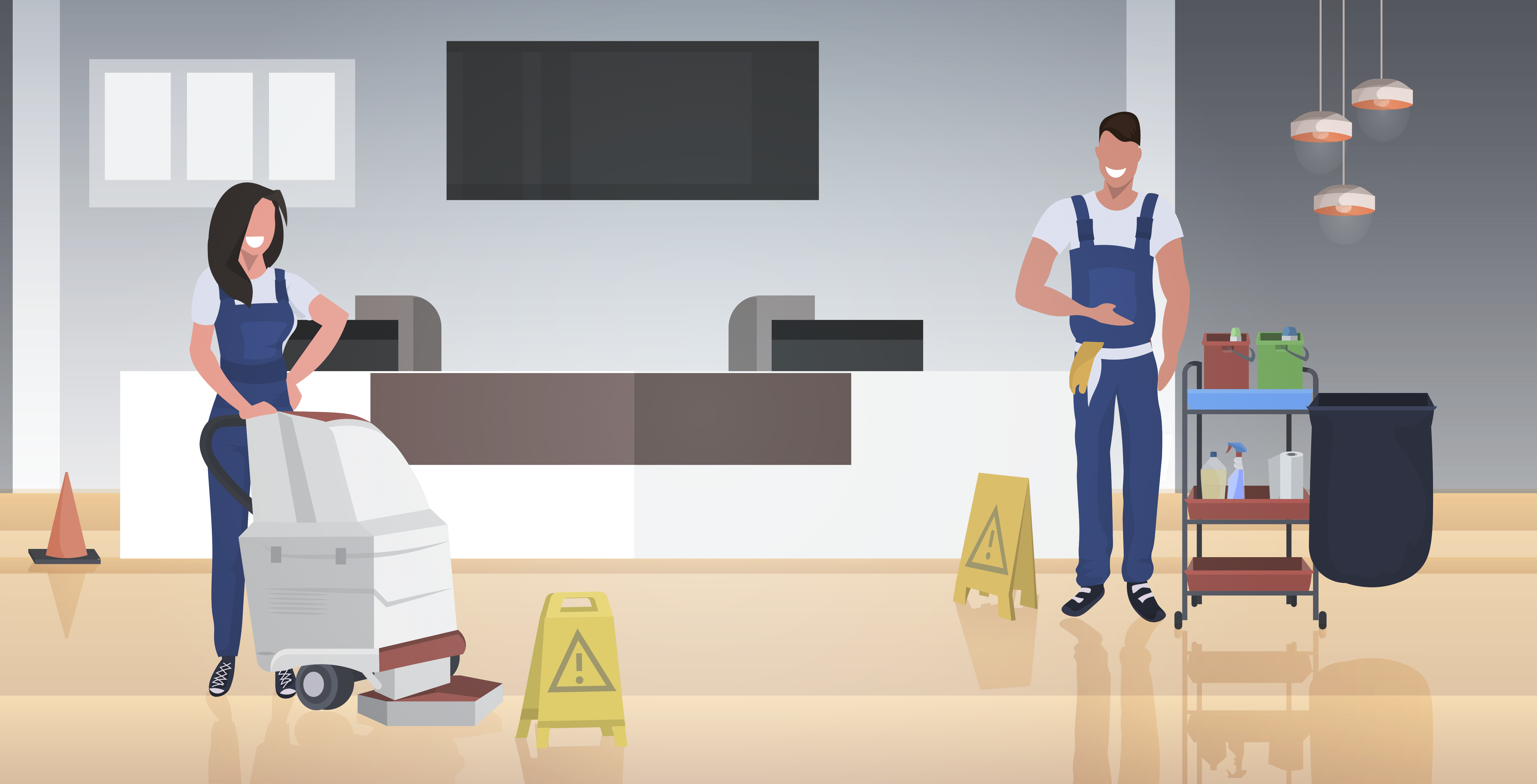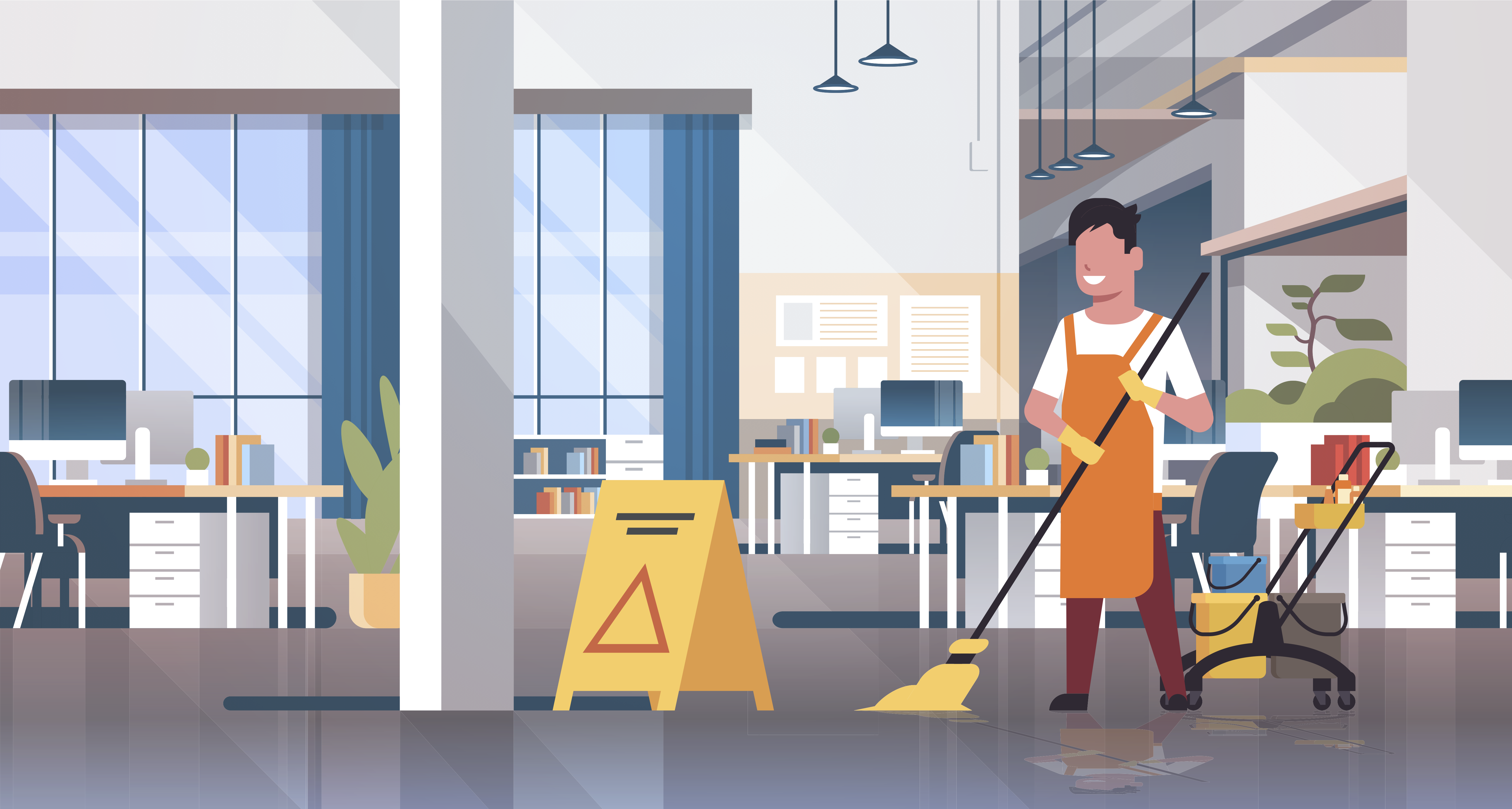What’s the difference between buffing and burnishing, and why does it matter?
Often, we receive scopes of work from prospective customers that will indicate “Monthly Buffing of Hard Surface Floors.” Or, a facility manager will let us know that he/she expects the “floors to be buffed once a month.” In this article, we hope to shed some light on two terms that are very often misunderstood – buffing and burnishing.
A Brief Science Lesson
You have seen those beautiful photos of a lake reflecting the image of trees in full Fall colors. It almost looks like a mirror. Reflection occurs when light bounces off an object. If the surface is smooth, as the water is in this photo, the light will reflect at the same angle as it hits the surface. This is called Specular Reflection. If the water in this same photo was “choppy,” the image would be distorted or dull. This is called Diffuse Reflection. So, if you want something to look shiny or highly reflective, it is important that the surface is as smooth as possible so that you have Specular Reflection.
To achieve a shiny, “wet look” on hard surface floors, it is important to have as smooth a surface as possible as in the photo above. The best way to keep your floors looking as shiny as possible is to perform daily, weekly, and periodic care of your floors. See our article on the 5 Steps to Keep Your VCT Floor Looking Good.
Buffers vs. Burnishers
As previously mentioned, when most people talk about the activity that makes their floors look shiny, they use the terms buff, buffing, spray buffing, or using a buffing machine. A buffer can restore some shine to floors, but a burnisher is a better tool to accomplish this task. The chart below describes the differences in these machines:
The photos below show a buffing machine and a burnisher. Notice the location of the motor and the wheels in both. The location of the motor on the buffer is intended to apply weight to the spinning action to help remove dirt, wax, and other materials. The burnisher, on the other hand, positions the motor off the pad so that the pad doesn’t “dig in” to the surface. It uses its speed, and thus heat, to soften the wax surface to remove the pits and scratches that take away the smoothness needed to create the shiny, wet look.
Lastly, you might think of the buffing machine as a utility tool, while the burnishing machine has only one purpose – polishing floors. For example, not only can you use a buffing machine on hard surface floors, but they may be used to clean carpets as well.
Burnisher (L) Buffer (R)
“So What? Why Does It Matter?”
To achieve the results that you want, it is important to know the difference between buff and burnish. Here are a couple of reasons why it is good to know this information:
- Simply, you sound like you know what you are talking about. When you ask someone to burnish the floors to give them a shine, you are using the correct terminology.
- If you outsource your custodial work, look at the equipment that your vendor is using to shine your floors. They should be using a burnisher. If they aren’t, your floors will not achieve that high-gloss look. A burnisher is a much more efficient tool for polishing floors.
- If you are purchasing your own equipment for polishing your floors, a burnisher is what you need….so don’t buy a buffing machine!
Using the correct terminology and using the right equipment are important in creating a janitorial program that is consistent and produces good results. If you outsource your work, knowing a few facts like the difference between burnishing and buffing will help you and your vendor have a stronger partnership and achieve your goals.








